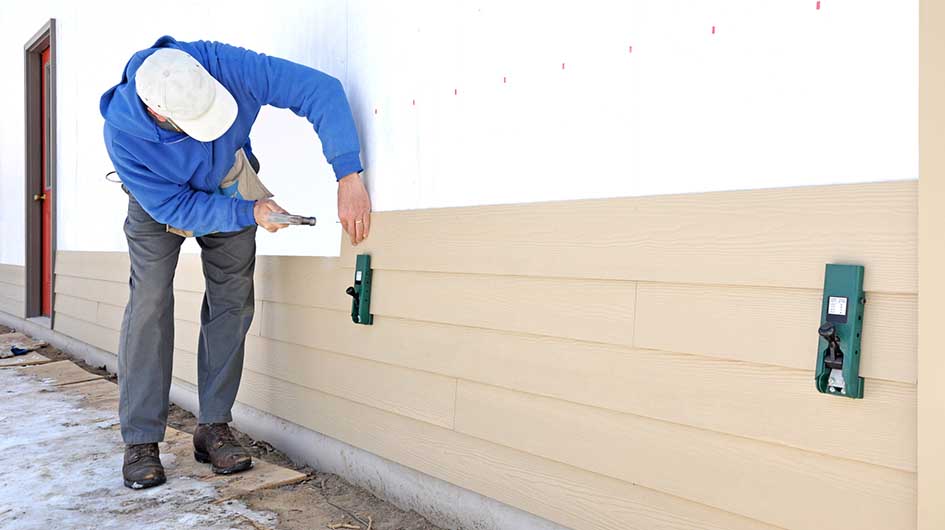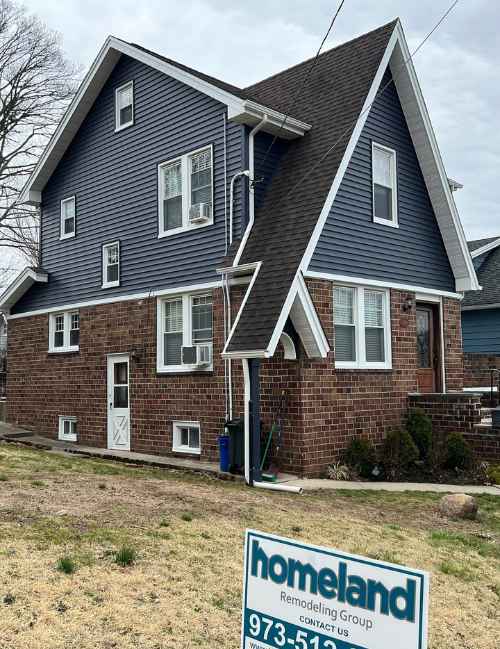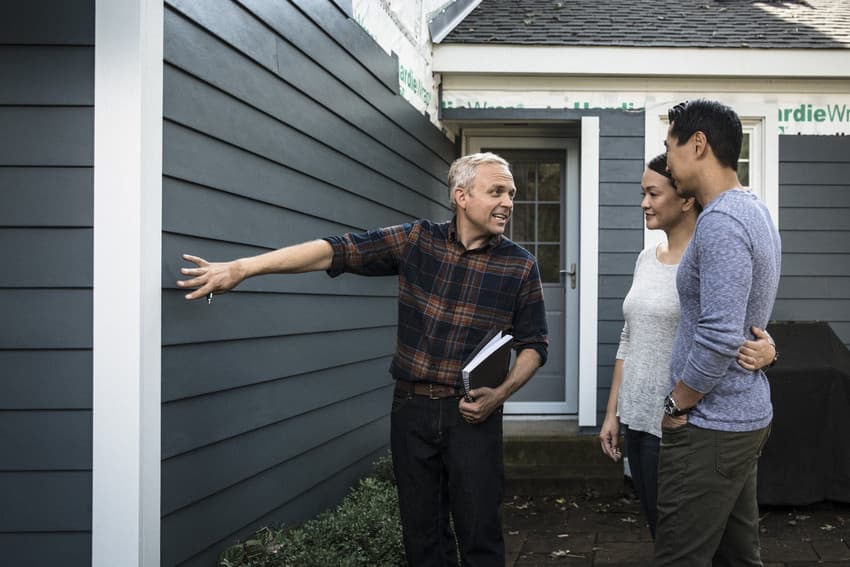The Necessary Overview to the Various Kinds of Home Siding and Their Distinct Advantages
In the realm of home renovation, choosing the appropriate siding is a crucial decision that affects both aesthetic allure and useful performance. With so lots of options to take into consideration, which siding material absolutely stands out for your particular project?
Wood Siding
Wood siding, a popular selection for property outsides, offers a classic aesthetic that incorporates natural elegance with structural stability. This siding product is readily available in numerous styles, consisting of clapboard, roof shingles, and board-and-batten, permitting house owners to personalize their façade to match their design preferences. Wood home siding is typically crafted from durable varieties such as cedar, redwood, or want, which are recognized for their strength and ability to hold up against environmental stressors.
One of the key advantages of wood siding is its exceptional insulation properties, which can add to power performance and lower home heating costs. Additionally, timber house siding is naturally degradable, making it an environmentally pleasant alternative when sourced sustainably. Routine maintenance, consisting of painting or staining, can extend its lifespan and boost its appearance, enabling property owners to protect the natural beauty of the timber.
Nevertheless, possible drawbacks include sensitivity to parasites, rot, and climate damages, demanding sufficient therapy and maintenance - morris siding contractor. Despite these worries, when effectively cared for, timber siding can offer a sturdy and gorgeous solution that improves the personality of a home while using a cozy, welcoming environment

Plastic Exterior Siding
Vinyl home siding has emerged as a leading option for house owners seeking a low-maintenance outside option that incorporates resilience and cost. This versatile material is crafted from polyvinyl chloride (PVC), making it immune to various weather, consisting of moisture and UV rays. Therefore, vinyl house siding does not warp, rot, or fade, ensuring lasting visual allure.
One of the key benefits of vinyl siding is its comprehensive variety of colors and styles, enabling homeowners to accomplish the wanted try to find their building without the need for frequent repainting. Furthermore, plastic exterior siding is simple to set up, which can substantially reduce labor prices during building or improvement projects.
Plastic home siding likewise adds to power performance. Many options feature insulation support, which boosts thermal efficiency, aiding to keep comfy interior temperatures and possibly lowering power costs. Its smooth surface helps with simple cleansing, needing just regular washing with a garden hose to remove dust and particles.
Fiber Cement Exterior Siding
Fiber cement siding has gained grip among building contractors and property owners alike because of its amazing combination of sturdiness and aesthetic versatility. Composed of a blend of sand, cement, and cellulose fibers, this house siding option is crafted to hold up against severe weather, consisting of high winds, heavy rain, and temperature level changes, making it a lasting choice for residential exteriors.

One of the key advantages of fiber concrete siding is its resistance to pests, such as termites, and its non-combustible nature, offering boosted fire safety. morris siding contractor. Furthermore, it is available in a broad range of shades, styles, and structures, permitting house owners to attain their preferred aesthetic without sacrificing efficiency
One more advantage is its low upkeep demands; fiber concrete home siding usually calls for paint or staining every 5-10 years, which is much less constant than various other products. Moreover, its durability contributes to a lower overall expense of ownership, as it minimizes the demand for frequent go to my blog repair work or substitutes.
Ultimately, fiber concrete exterior siding represents an exceptional investment for those seeking a resistant, appealing, and versatile exterior choice, combining both kind and feature to enhance the home's curb allure.
Metal Exterior Siding
The appeal of steel siding lies in its durable durability and contemporary visual allure, making it a favored selection for modern style. Readily available in products such as light weight aluminum and steel, metal home siding supplies a series of shades and surfaces, permitting home owners to achieve a personalized look that complements their design vision.

Power performance is an additional substantial benefit, as many metal exterior siding products are created with insulation choices that assist manage interior temperature levels. This can bring about decreased energy costs in time. Furthermore, metal exterior siding is usually recyclable, making it an ecologically friendly option for sustainability-minded property owners.
The setup process for metal siding can be relatively straightforward, resulting in a quicker turnaround time for construction projects. Overall, steel siding combines capability and design, making it a useful option for those seeking a enduring and visually attractive outside finish.
Brick and Rock Home Siding
Brick and stone siding stands out as a classic selection that boosts the visual charm of any home. Understood for their durability and reduced maintenance, these products offer a remarkable roi while boosting the building's visual allure. Available in different colors, Recommended Site textures, and patterns, brick and rock can be tailored to match diverse building styles, from standard to contemporary.
Among the primary advantages of block and rock exterior siding is their power effectiveness. Both products have natural protecting homes that aid regulate indoor temperatures, possibly decreasing cooling and heating costs. Furthermore, they provide premium fire resistance contrasted to other home siding alternatives, adding to enhanced security.
One more advantage is their long life. Block and rock can last for decades, usually requiring minimal upkeep beyond occasional cleaning. Unlike wood exterior siding, they are unsusceptible parasites and rot, making certain a long-lasting exterior that withstands the elements.
Verdict
In recap, the selection of house siding substantially affects a home's visual charm, power effectiveness, and maintenance needs. Each type of house siding-- whether wood, plastic, fiber metal, concrete, or brick and stone-- provides distinct advantages tailored to numerous house owner preferences and environmental problems.
One of the main advantages of wood home siding is its outstanding insulation residential or commercial properties, which can add to energy effectiveness and reduced heating prices. Furthermore, timber siding is naturally degradable, making it an environmentally friendly alternative when sourced sustainably.One of the primary benefits of steel siding is its resistance to different environmental aspects.Power performance is one more considerable advantage, as lots of steel home siding items are developed with insulation anchor choices that aid manage indoor temperatures. Each type of home siding-- whether timber, plastic, fiber cement, brick, or steel and stone-- uses one-of-a-kind benefits tailored to different home owner preferences and environmental conditions.